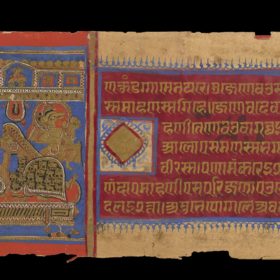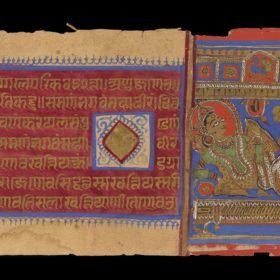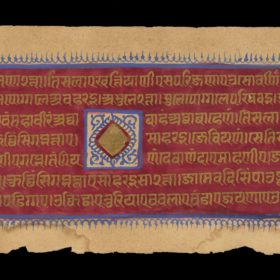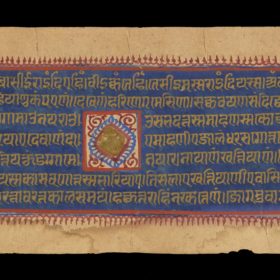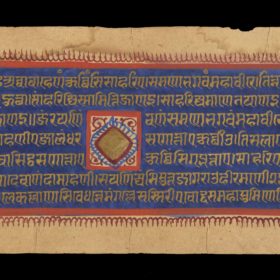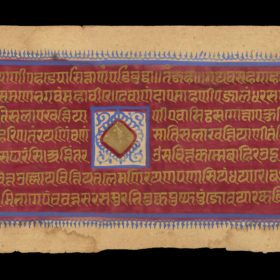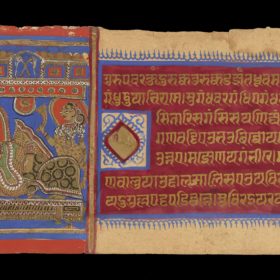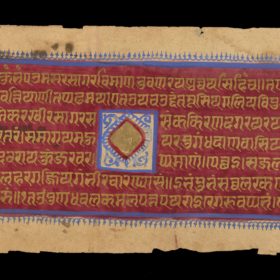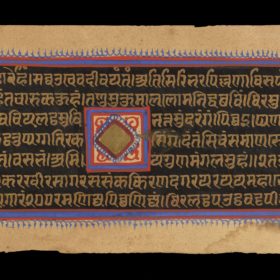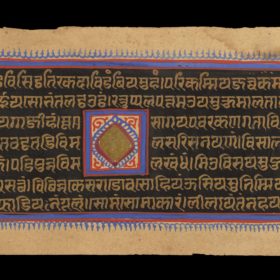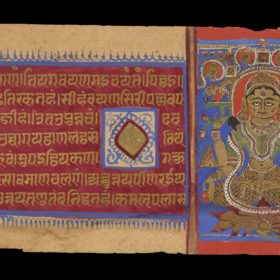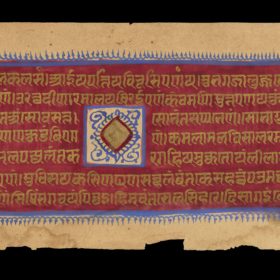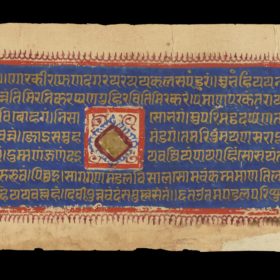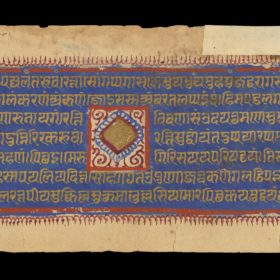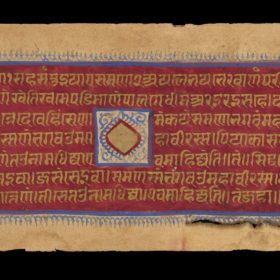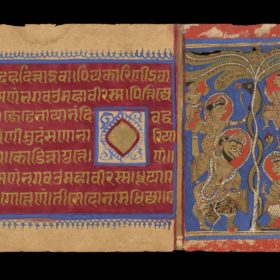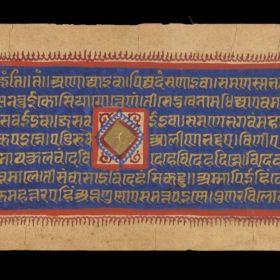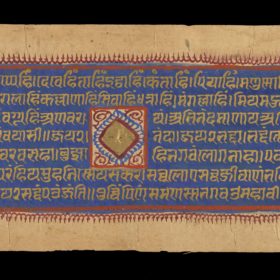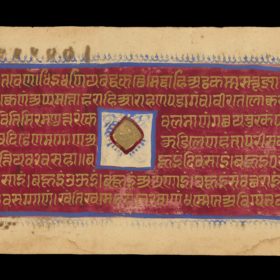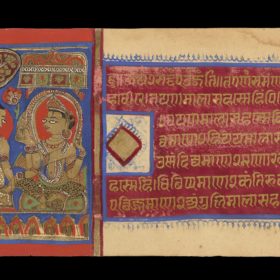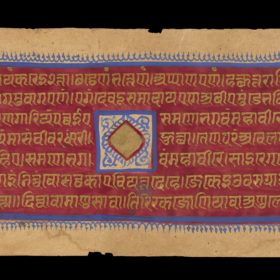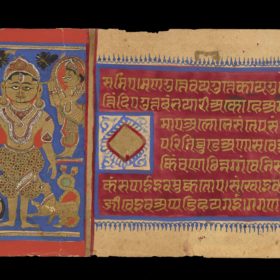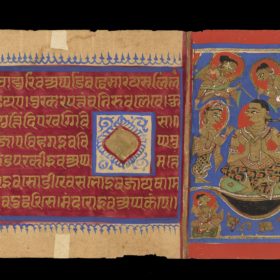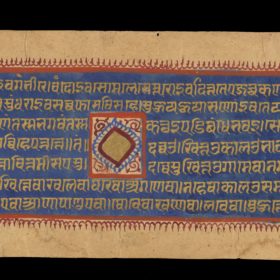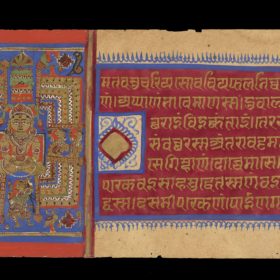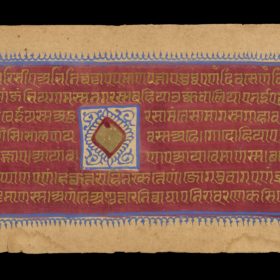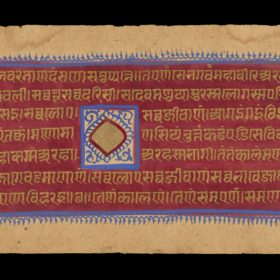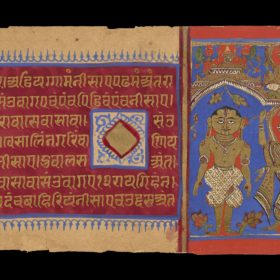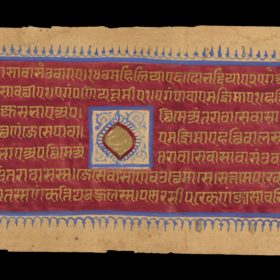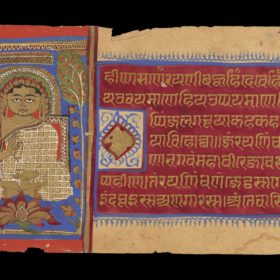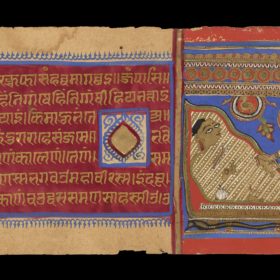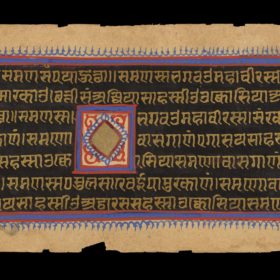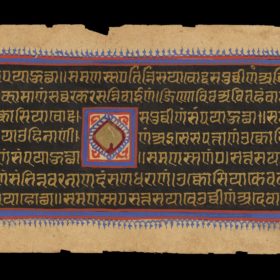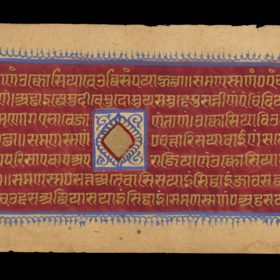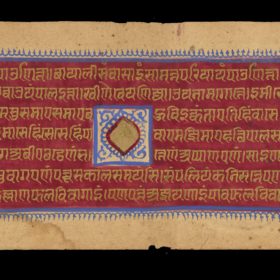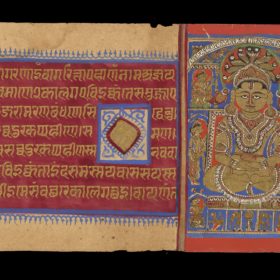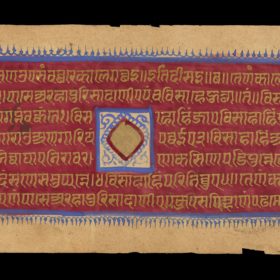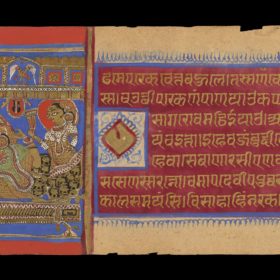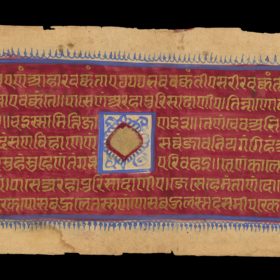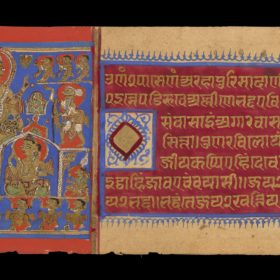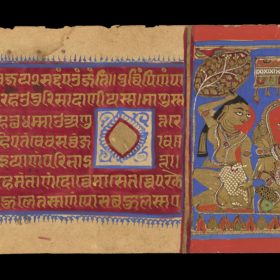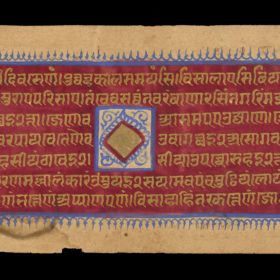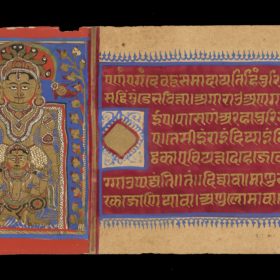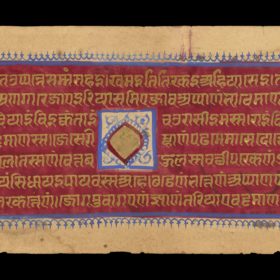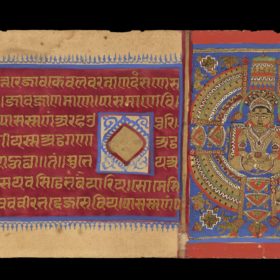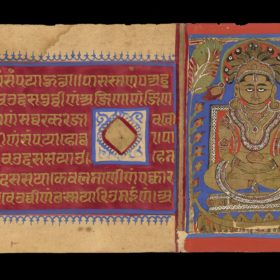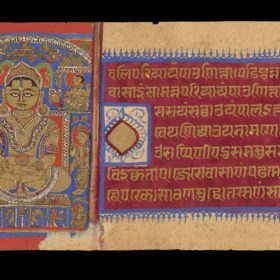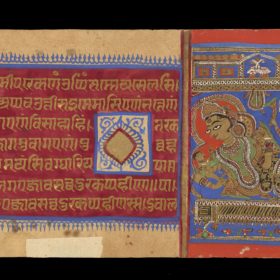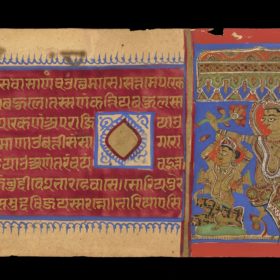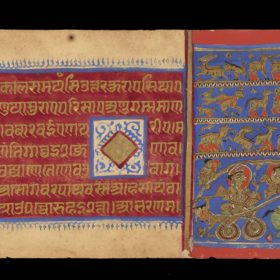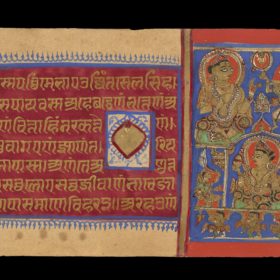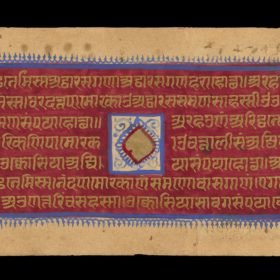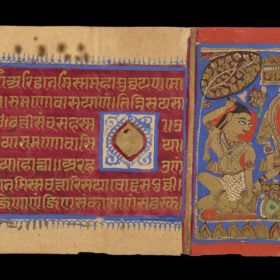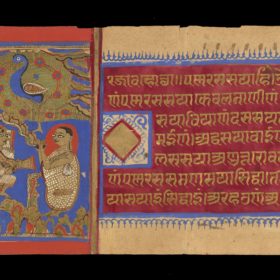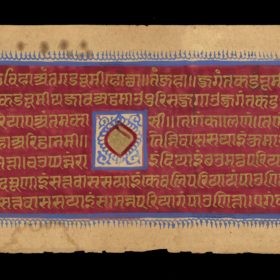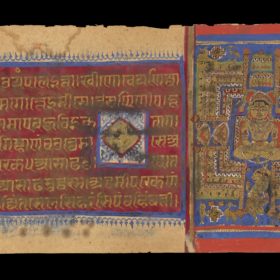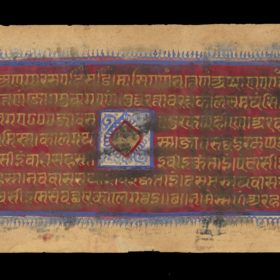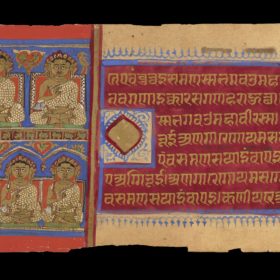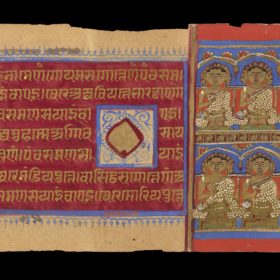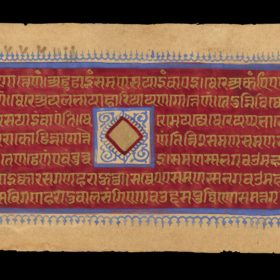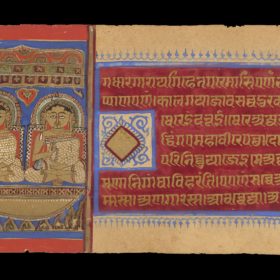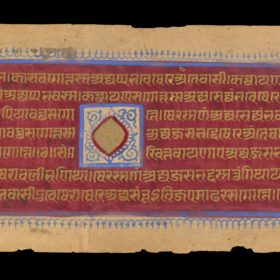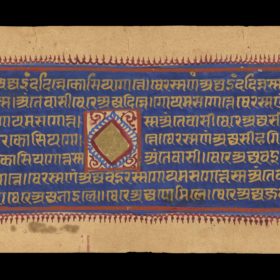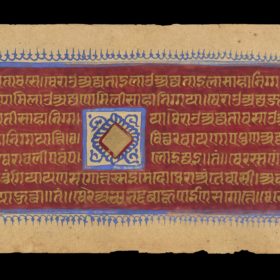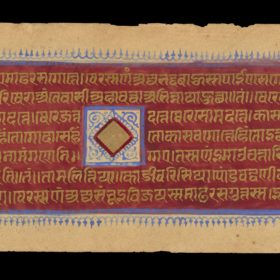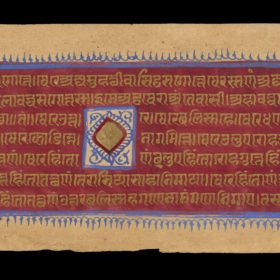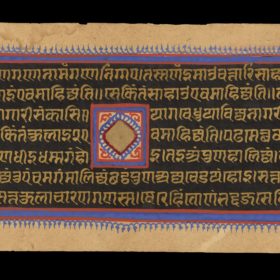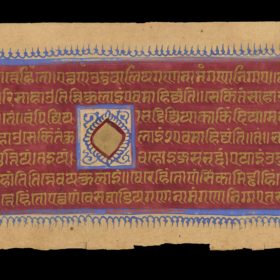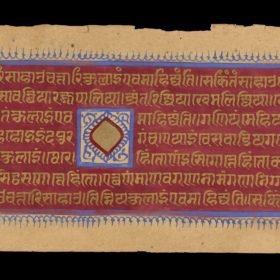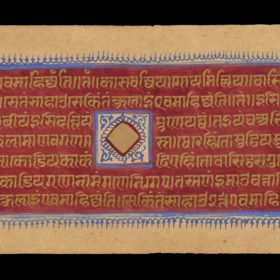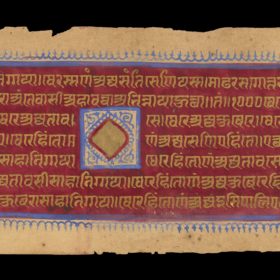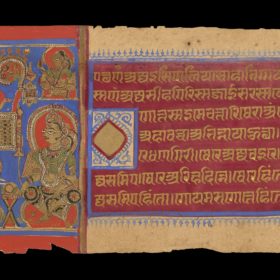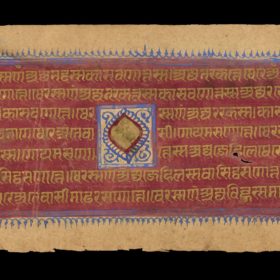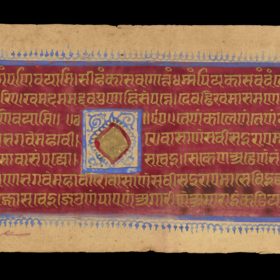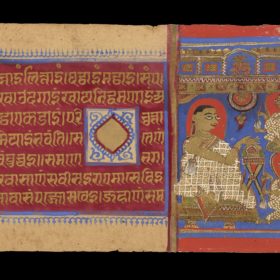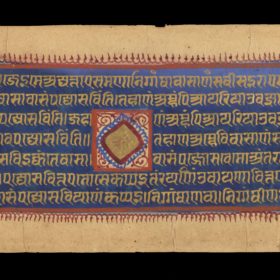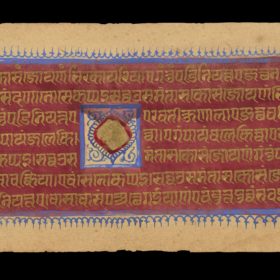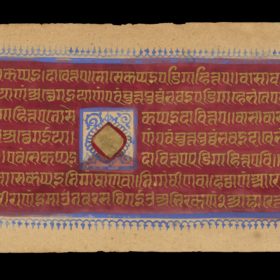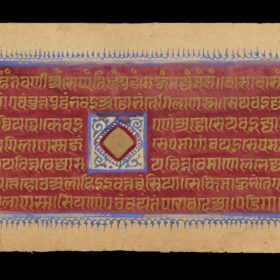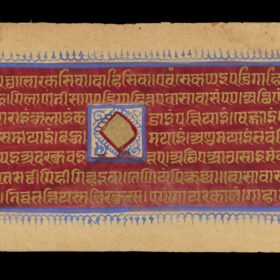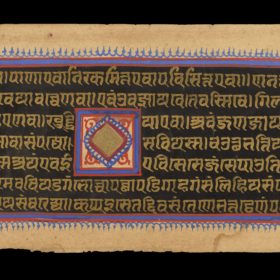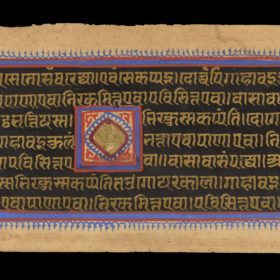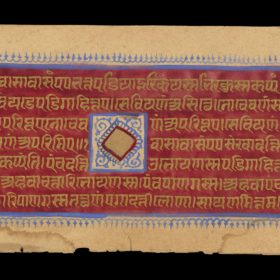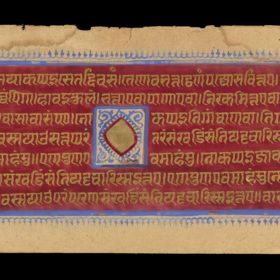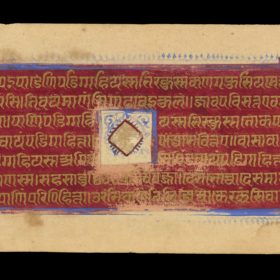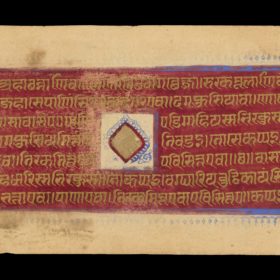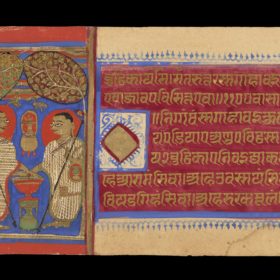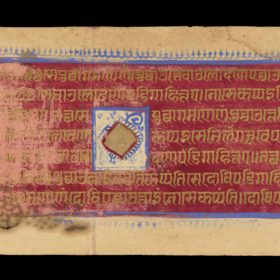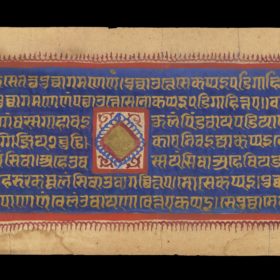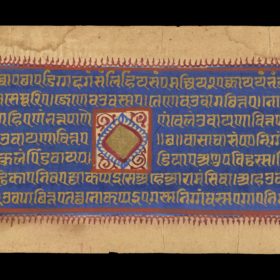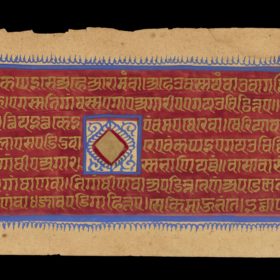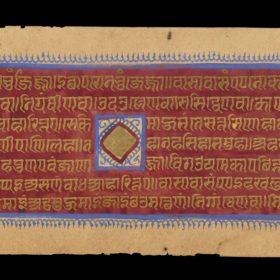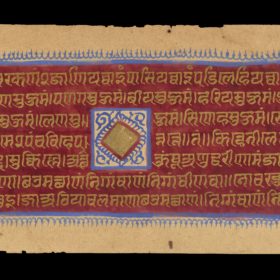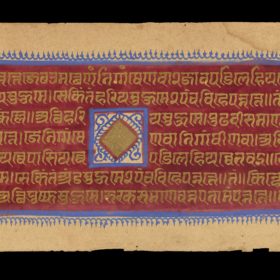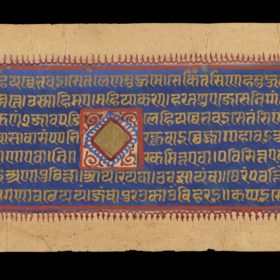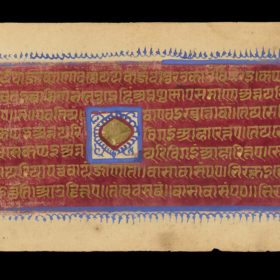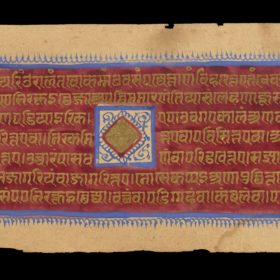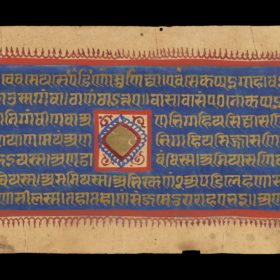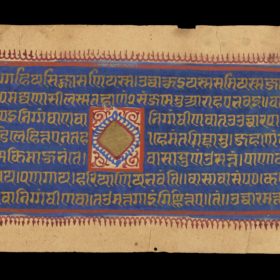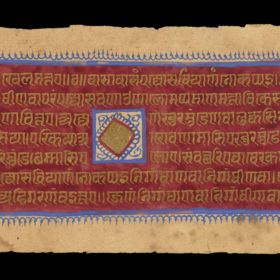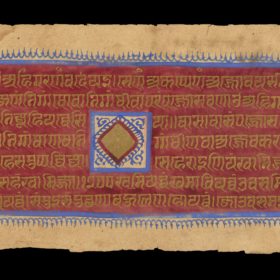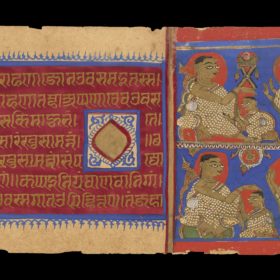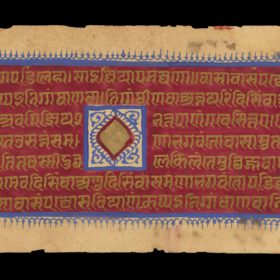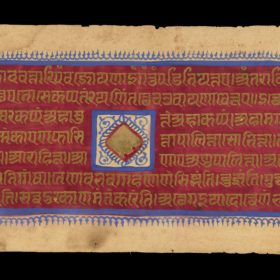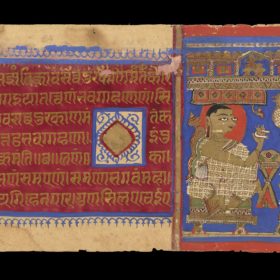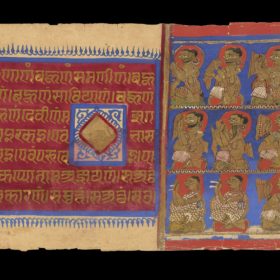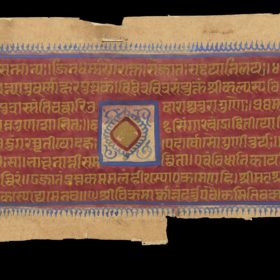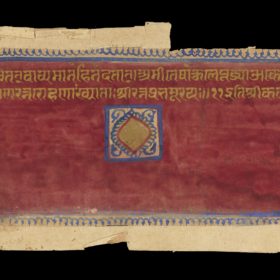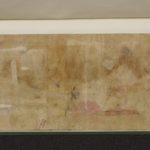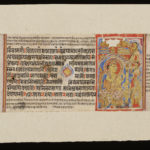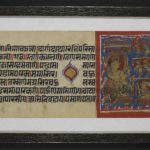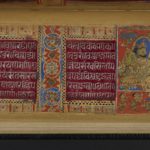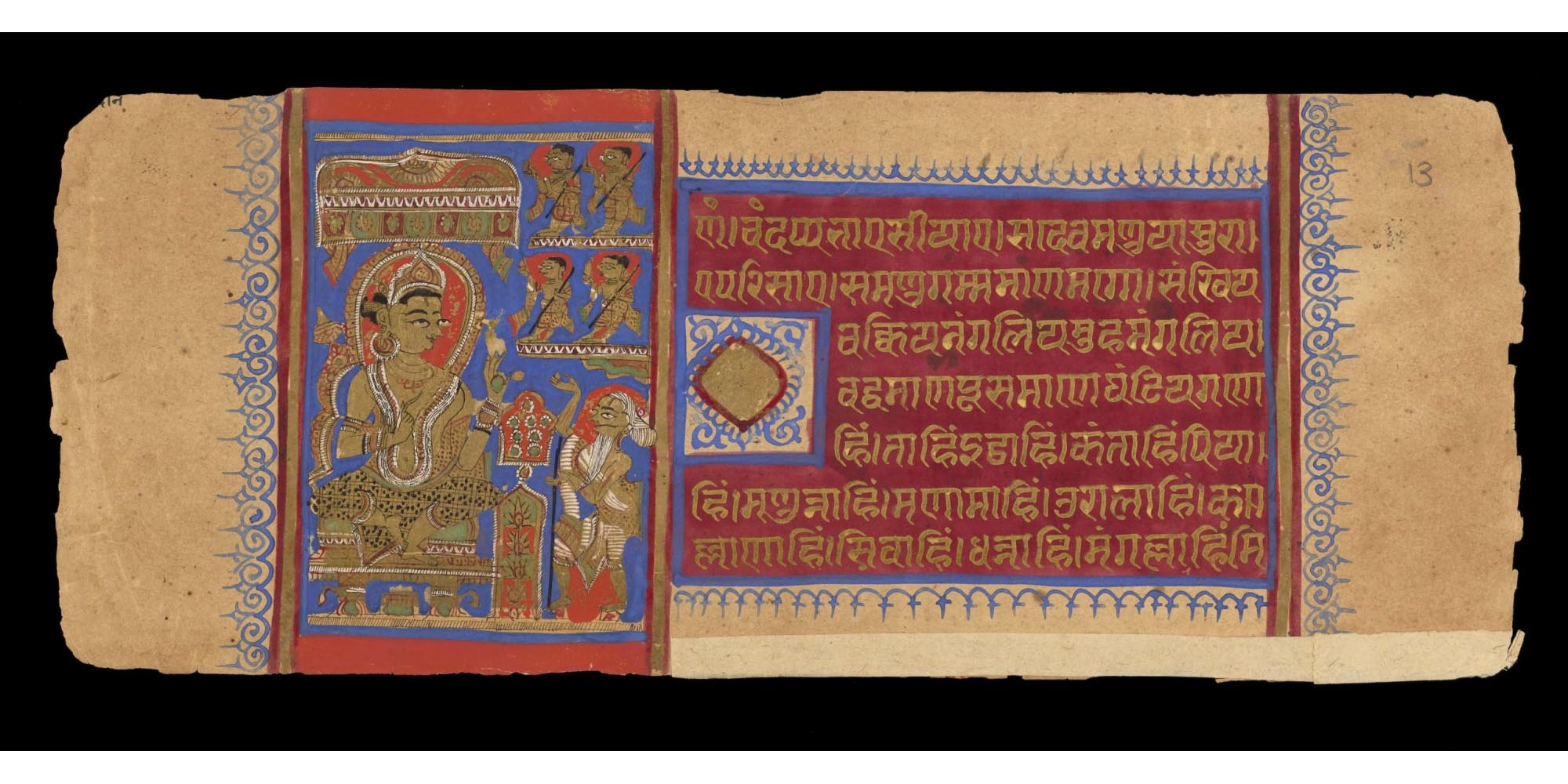
Background
The initiation into the ascetic life is a key moment in the life of a Jina.
The Kalpa-sūtra is the most frequently illustrated Jain text of the Śvetāmbara sect. It is read and recited by monks in the Śvetāmbara festival of Paryuṣaṇ, which takes place in August to September each year.
The first part of the Kalpa-sūtra deals with the lives of the Jinas, especially Mahāvīra, Pārśva, Nemi and Ṛṣabha. It features almost identical stories of their births, lives as princes, renunciation, enlightenment and final emancipation. The second part – Sthavirāvali – is a praise of the early teachers of Jainism. The third part – Sāmācārī – deals with particular monastic rules to be followed during the rainy season.
Glossary
Description
The partly damaged caption in the top-left corner says: …dāna – '…gift'.
Mahāvīra is seated on a throne in a pavilion, dressed as a prince and wearing precious ornaments. Jewels and various riches are heaped in front of him.
The old white-bearded man standing on the right represents the poor. The four men at the top may be the Laukāntika gods.
The Laukāntika gods come to awaken Mahāvīra spiritually and inspire him to give up his possessions, exclaiming:
Victory be to the joy of the world!
Victory be to one with auspicious marks!
Glory be to thee, oh bull among best kṣatriyas
Awake, oh Lord, Master of the Universe!
Establish religion and order
For the well-being of all living beings.
Then Mahāvīra knows that the time is right for him to renounce the worldly life. He spends the following year giving all that belongs to him to the poor.
Other visual elements
The original paper is slightly damaged. But, as with many Kalpa-sūtra manuscripts, there is a clear intention to make the manuscript a valuable and remarkable object in itself. This aim is signalled by the:
- coloured background for the text
- gold ink instead of the standard black ink
- decorated border with blue floral motifs
- diamond filled with gold ink, with arrow-like blue lines and surrounding blue border as ornamental motifs.
The diamond in the centre is a symbolic reminder of the way in which manuscripts were bound when they were on palm leaf. Strings through holes in the paper were used to thread together the loose folios so the reader could turn them over easily. The diamond is in the place where one of the holes would once have been.
Note how the paper has been repaired along the bottom right-hand side of the sheet.
- Source:
Wellcome Trust Library
- Shelfmark:
Gamma 453
- Author:
unknown
- Date of creation:
1512
- Folio number:
59 recto
- Total number of folios:
139
- Place of creation:
western India
- Language:
Ardhamāgadhī Prākrit
- Medium:
watercolour on paper
- Size:
- Copyright:
Wellcome Library, London
- Image Copyright:
Description
The partly damaged caption in the top-left corner says: …dāna – ‘…gift’.
Mahāvīra is seated on a throne in a pavilion, dressed as a prince and wearing precious ornaments. Jewels and various riches are heaped in front of him.
The old white-bearded man standing on the right represents the poor. The four men at the top may be the Laukāntika gods.
The Laukāntika gods come to awaken Mahāvīra spiritually and inspire him to give up his possessions, exclaiming:
Victory be to the joy of the world!
Victory be to one with auspicious marks!
Glory be to thee, oh bull among best kṣatriyas
Awake, oh Lord, Master of the Universe!
Establish religion and order
For the well-being of all living beings.
Then Mahāvīra knows that the time is right for him to renounce the worldly life. He spends the following year giving all that belongs to him to the poor.
Other visual elements
The original paper is slightly damaged. But, as with many Kalpa-sūtra manuscripts, there is a clear intention to make the manuscript a valuable and remarkable object in itself. This aim is signalled by the:
- coloured background for the text
- gold ink instead of the standard black ink
- decorated border with blue floral motifs
- diamond filled with gold ink, with arrow-like blue lines and surrounding blue border as ornamental motifs.
The diamond in the centre is a symbolic reminder of the way in which manuscripts were bound when they were on palm leaf. Strings through holes in the paper were used to thread together the loose folios so the reader could turn them over easily. The diamond is in the place where one of the holes would once have been.
Note how the paper has been repaired along the bottom right-hand side of the sheet.





























































































